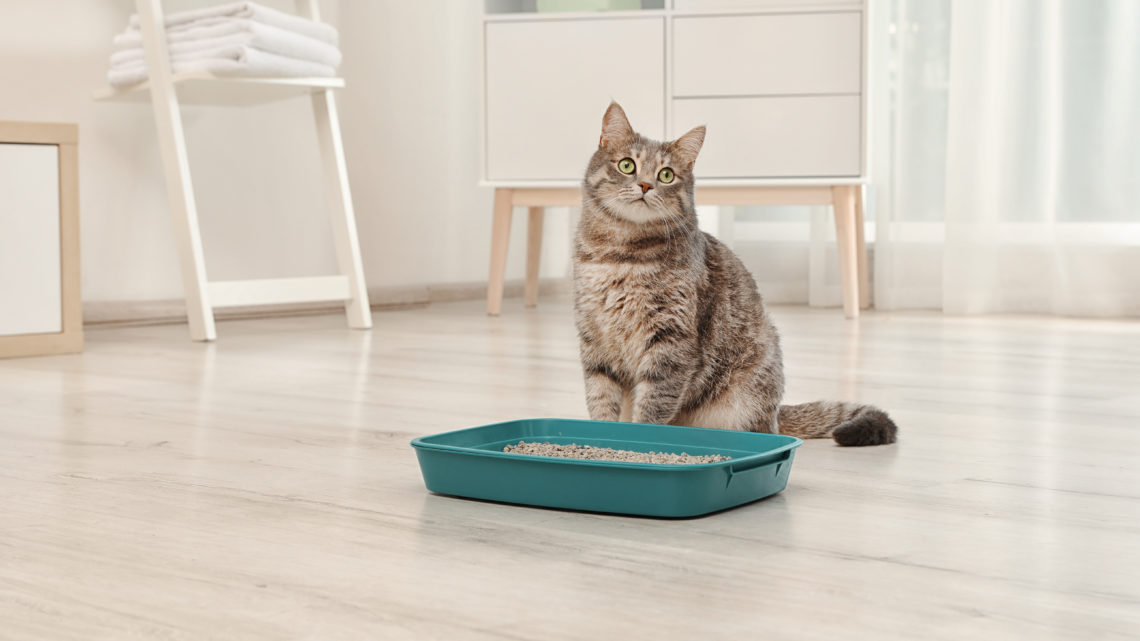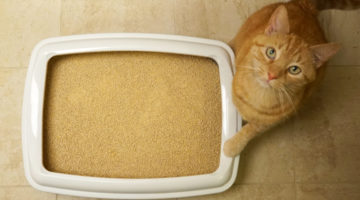With the ever-expanding variety of cat litter on the market, it’s possible your cat may be allergic to some of them. Learn what to watch for, and what to do about it.
Cat litter has come a long way since it was first invented in 1947. For decades, people relied on variations of a granular clay-based litter. Today, cat litter comprises a growing industry that’s estimated to hit $4 billion in 2020 and has sprouted a dizzying selection of litter choices. Given the wide variety of products on the market (see sidebar below), it’s not surprising that some can cause health issues in certain cats – including allergies. Here’s how to find out if your cat might be allergic to his litter, and how to help him.
Is my cat likely to develop litter allergies?
A healthy adult cat is less prone to litter allergies. The most vulnerable populations are kittens, seniors, and immune-compromised cats (i.e. FIV+). Brachycephalic or flat-nosed breeds such as the Persian, Himalayan and Scottish fold are also more sensitive to respiratory conditions. Cats that suffer from other allergies are more likely to develop litter allergies.
Litter dust can cause sinus or respiratory flare-ups in both people and cats. While humans can wear masks while cleaning out litter boxes, cats can’t. Remember also that a cat’s nose is only about 8” from the ground, so he gets much closer to his litter than you do.
Litter allergy symptoms
While these symptoms can be caused by many different allergens, litter may be the culprit if you can’t find any other cause.
Physical symptoms
- Sneezing, coughing, wheezing, runny eyes or nose.
- Vomiting or diarrhea.
- Sudden swelling of the face from anaphylactic shock (a rare but life-threatening allergic reaction that restricts air flow and respiration). Contact a vet immediately.
Behavioral symptoms
- Excess licking or grooming in response to itching. Over-grooming can lead to missing fur or bald patches.
- Increased chewing, scratching or biting while grooming.
- Increased scratching around the ears, or ear infection.
- Failure to use the litter box, soiling outside the box or elsewhere.

If you suspect a litter allergy, try switching to another product. If symptoms persist, take your cat to the vet. Allergies to cat litter may be diagnosed through blood or intradermal testing.
8 ways to help prevent litter allergies
1. Use a hypoallergenic litter. Traditional non-clumping cat litters tend to be dusty, stirring up clouds of airborne particles when poured from the container, or when a cat is digging in the litter box. Even litters advertised as “dust free” aren’t 100% free of dust. Read labels and ingredient lists, but keep in mind that some formulas are proprietary and there is no current legislation mandating a complete ingredient list.
Strongly-scented litters with chemical fragrances are possible allergens. Even natural scents from essential oils are not always good for cats — not because of the oils themselves, but because of their quality. It would not be cost-effective for manufacturers to use therapeutic or food-grade quality essential oils in their litter products.
2. Switch your cat’s litter, gradually phasing out the old with the new over the course of a few days. Cats don’t appreciate sudden changes. If your cat has an allergy, it may take two weeks to notice a difference.
3. Scoop the litter box daily to keep it as clean as possible. Because many formulas promise an odor-free home for up to ten days, some consumers think this means they don’t have to clean the box every day. But poop is poop. It can be covered by litter but it won’t vanish without scooping. Not all cats like to cover their poop, and if litter isn’t scooped often it becomes both unsightly but unhygienic. It’s also important to regularly wash the litter box down to minimize dust allergens.
4. Bathe your cat regularly, or wipe his fur to remove any litter dust or bits lodged between his toes.
5. Most cats like privacy when doing their litter box business, but discreetly monitor him for any sneezing or coughing.
6. Keep your home clean, well-dusted and vacuumed. Clean the litter box area, bedding, toys and other objects to minimize the effects of litter dust. Use a litter mat to reduce tracking to the rest of the house.
7. Use an air purifier near the litter box — not a chemical spray or plug-in deodorizer, but an enzymatic odor neutralizer.
8. Find a roomy, uncovered litter box your cat likes and place it in a ventilated area that’s also quiet, low-traffic and easy-to-access.
In trying to determine the source of your cat’s allergies, you may not have considered his litter. But you may find that switching to another product, and/or taking steps to minimize litter dust, will do the trick.







No Comment